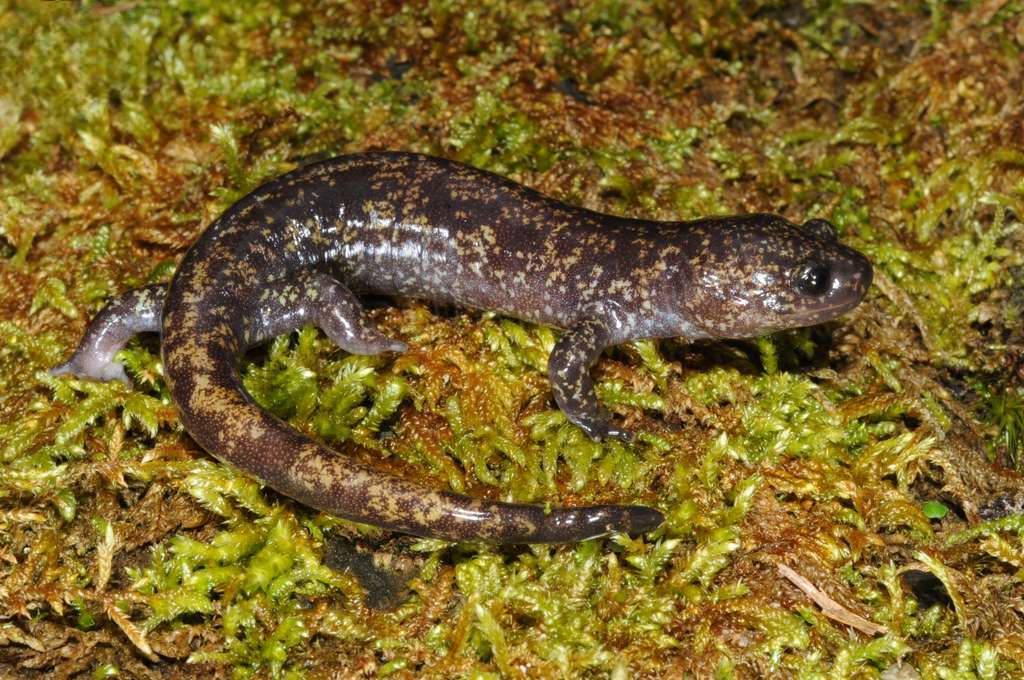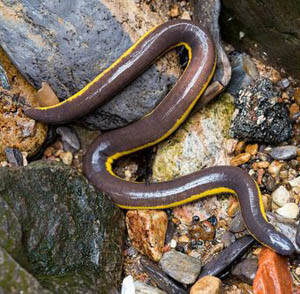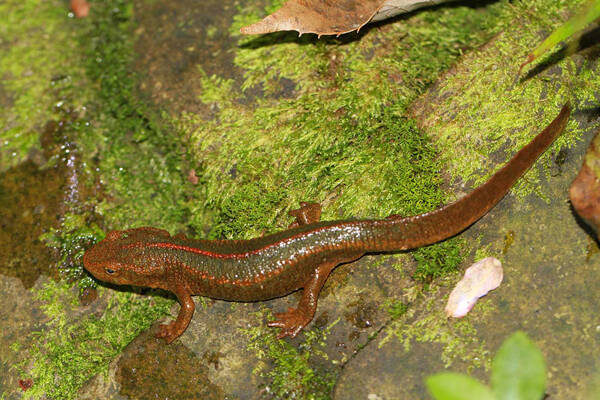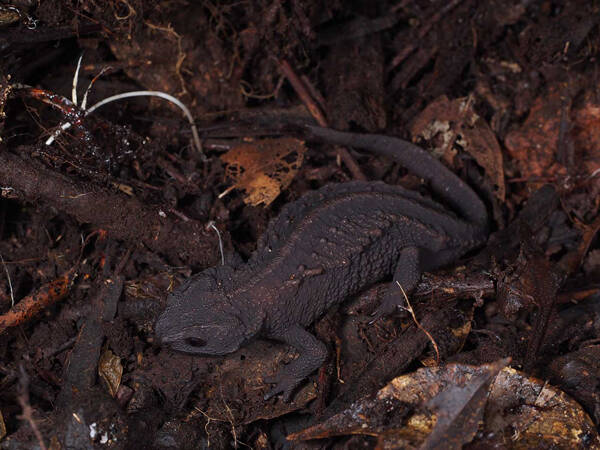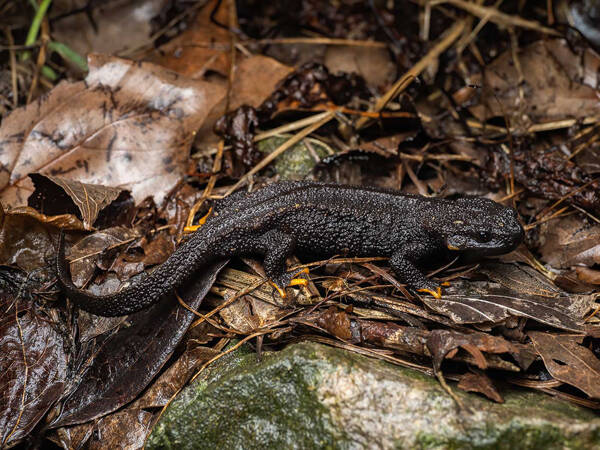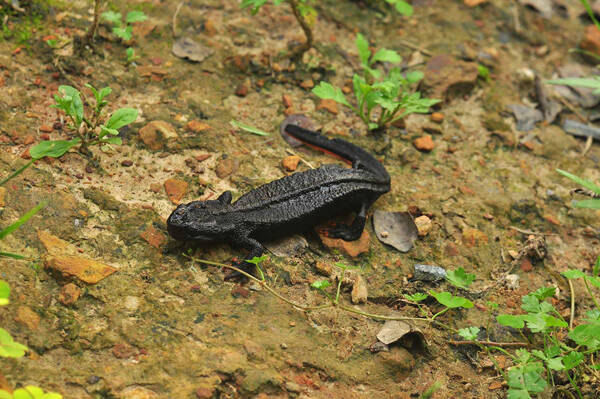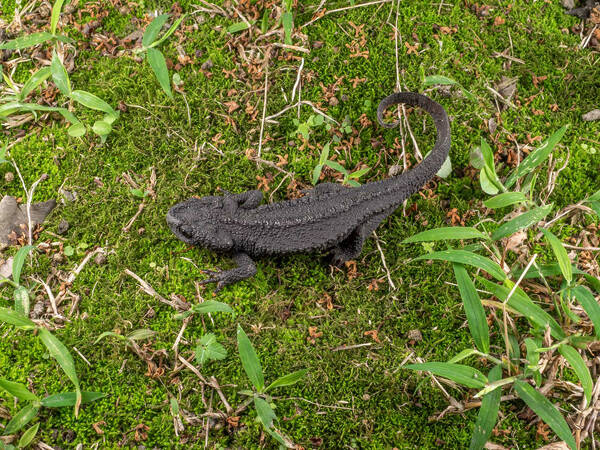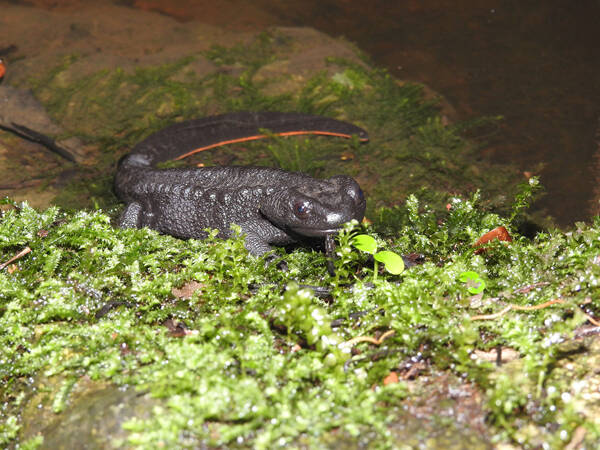Andrias davidianus
IUCN
LCBasic Information
Scientific classification
- name:Andrias davidianus
- Scientific Name:Andrias davidianus,Chinese Giant Salamander,Andrias scheuchzeri davidianus、Megalobatrachus davidianus、Sieboldia davidi,Giant salamander, mermaid, baby fish, foot fish, crying fish, wax dog
- Outline:Urodela
- Family:Caudata Cryptobrachium Megalosoma
Vital signs
- length:582~834mm
- Weight:
- lifetime:
Feature
The body is large and flat, the head is large, flat and broad, and there are irregular black or dark brown markings on the dorsal and ventral surfaces, and some have unclear markings.
Distribution and Habitat
This species is endemic to China and is distributed in Hebei, Henan, Shanxi, Shaanxi, Gansu, Qinghai, Sichuan, Chongqing, Yunnan, Guizhou, Anhui, Hubei, Hunan, Jiangxi, Jiangsu, Shanghai, Zhejiang, Fujian, Guangdong, and Guangxi.
Appearance
The body is large, with a thick and flat trunk. The tail is high and thick at the base, gradually flattened to the sides, with a high and thick caudal fin, and a hooked round or pointed end. The skin is relatively smooth, with paired warts on the dorsal and ventral sides of the head; the sides of the body have thick skin folds and warts, and the costal grooves are 12-15 or not obvious. The back of the body is light brown, brown-black, etc., with black or brown-black spots; the ventral side is gray-brown.
Details
The giant salamander is an ancient amphibian that evolved from aquatic fish in the Devonian period of the Paleozoic Era 360 million years ago. It usually lives in caves and stone caves in deep pools of streams and rivers below 1,000 meters above sea level. It is more common in caves above and below the beach mouth. The cave entrance is not large, with only one entrance and exit; the depth of the cave varies, and the cave is spacious and flat. It often lies in the cave during the day and rarely goes out. In summer and autumn, it also has the habit of going ashore to find food or bask in the sun during the day. The giant salamander usually goes out at night and returns in the morning, and often lives in a cave. It mainly hunts at night, often waiting among the rocks at the beach mouth, and suddenly opens its mouth to prey when it finds prey animals passing by. The giant salamander is suitable for living in water with a water temperature of 3 to 23℃. Large individuals mostly live in deep water, and small and medium-sized individuals mostly live in shallow water. Adult giant salamanders mostly live alone, while young ones often live in groups in cracks between rocks. The optimal water temperature for their survival is 10-20℃. Giant salamanders often extend their heads to the surface of the water to breathe, and their skin is also an important organ for gas exchange. In water with high oxygen content, giant salamanders can lie on the bottom of the water for a long time without surfacing to breathe. In artificial breeding, they extend their nostrils to the surface of the water to breathe once every 6-30 minutes, and inhale for about a few seconds to tens of seconds.
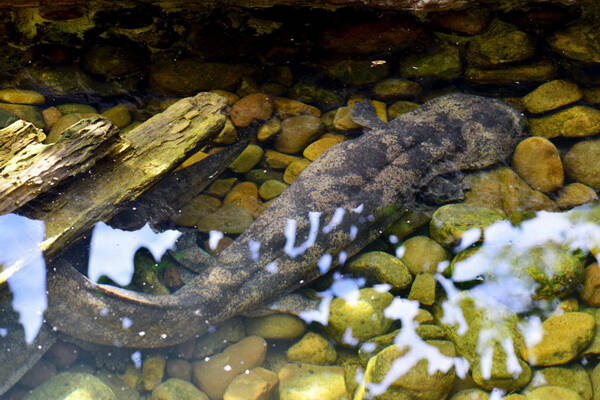
The small teeth are sharp and dense, and the jaw muscles are well developed. Once the prey is bitten, it is difficult to escape. But they cannot chew, and can only swallow the prey whole. The body with a smooth surface and covered with mucus will emit a strange smell when it encounters danger, which will make the enemy retreat.
The Chinese giant salamander has poor eyesight and mainly senses external information through smell and touch. They can also sense vibrations in the water through warts on their skin, and then catch fish, shrimp and insects in the water. The Chinese giant salamander occupies the top of the food chain in the ecosystem in which it lives, and is an important link in the food chain. The Chinese giant salamander has slightly different food sources in different waters. They have a large appetite and mainly prey on fish, crustaceans, amphibians and small arthropods in the water. In addition, a small amount of plant components are also found in the stomach of the giant salamander. Living in the habitat of the giant salamander in the Yangtze River Basin, there are fish such as white-shelled turtles, wide-mouthed light-lipped fish, and horse-mouthed fish, which provide a wide range of prey for the giant salamander.
Giant salamanders like to prey on crabs. A 1.5 kg individual has 6 crabs in its stomach, with a total weight of about 140 grams; a 2.5 kg individual can swallow 250-300 grams of food at a time; a giant salamander weighing more than 1 oyster was found in Mabian County, Sichuan, and there was a 0.5 kg fish in its stomach. An analysis of the diet of giant salamanders in the upper reaches of Ganyou River in Zhashui County, Shaanxi Province showed that crabs accounted for 48.3%, boat nail fish accounted for 12.5%, aquatic insect larvae accounted for 7.8%, water birds accounted for 3.1%, wood chips accounted for 3.1%, small stones accounted for 3.1%, giant salamander larvae accounted for 1.5%, and empty stomachs accounted for 20.3%. The metabolism of giant salamanders is relatively slow. Even if they stop eating for half a month, there will still be undigested food in their stomachs. They are very resistant to starvation. As long as they are kept in clean and cool water, they will not starve to death if they are not fed for several months or even more than a year.
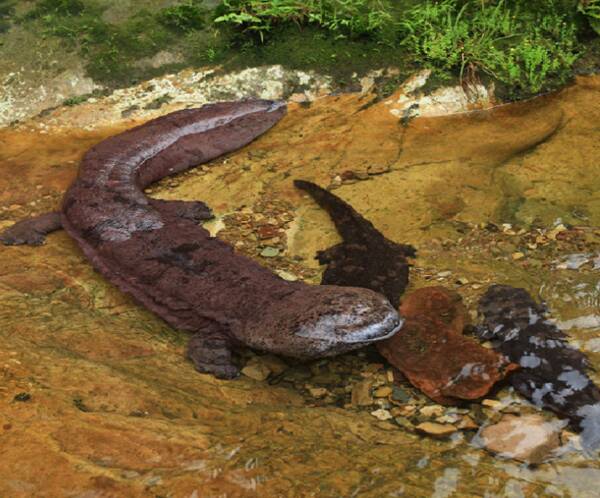
Female Chinese giant salamanders lay eggs in caves in the water, and can lay hundreds of eggs at a time. The length of a newly born juvenile is only about 3 cm, and it takes about 15 years to grow to sexual maturity under natural conditions. The breeding season of giant salamanders is from May to September every year, and the peak spawning period is from July to September. The eggs of giant salamanders are mostly arranged in single beads in the shape of rosary, but there are also cases where 2 to 7 eggs are contained in one capsule. Before laying eggs, the male salamander first chooses a spawning site, usually in a cave in a stream or river with a sandy or muddy bottom about 1 meter deep, and enters the cave, using its feet, tail and head to clear the debris in the cave, and then exits the cave. The female salamander then enters the cave to lay eggs. Some female salamanders also lay eggs among the rocks in the shallows. Spawning usually takes place at night, especially on thunderstorm nights. Each female lays 200 to 1,500 eggs. After laying eggs, the female salamander leaves or is driven away by the male salamander, otherwise the female salamander may eat its own eggs. The male salamander stays alone to protect the eggs to prevent them from being washed away by the flowing water or being harmed by enemies. During the incubation period, if an enemy approaches, the male salamander will open his mouth to show a threatening action to resist the invasion of other enemies. The male salamander may bend his body into a semicircle to surround the eggs and protect them. The male salamander will leave only after the young salamanders hatch and disperse to live independently.
The giant salamander is a relatively primitive species among the existing amphibians. It has certain value in studying animal evolution and other scientific research and teaching. It is raised in zoos as an ornamental animal.
Due to the high economic value of giant salamanders, people are overfishing them for food, and the pollution of rivers and the destruction of the ecological environment have caused a sharp decline in the number of giant salamanders. In many places, resources are exhausted and even on the verge of extinction.
Listed in the second level of China's 2021 edition of the "National Key Protected Wildlife List" (only for wild populations).

